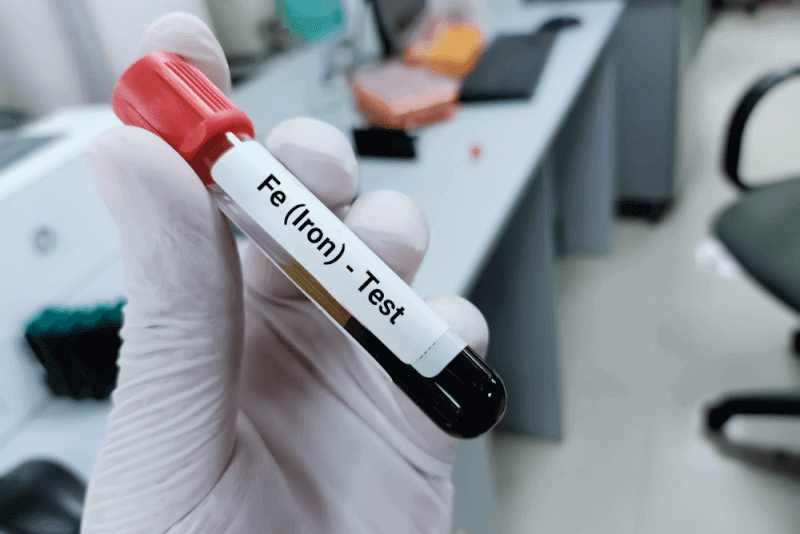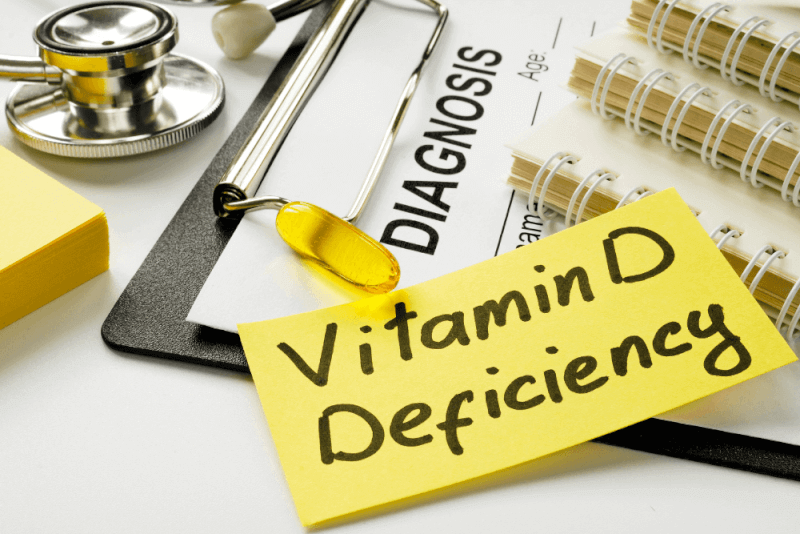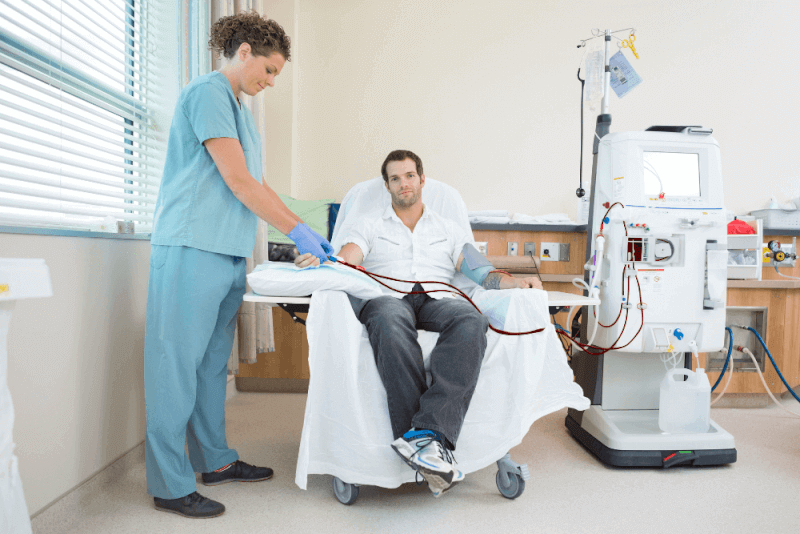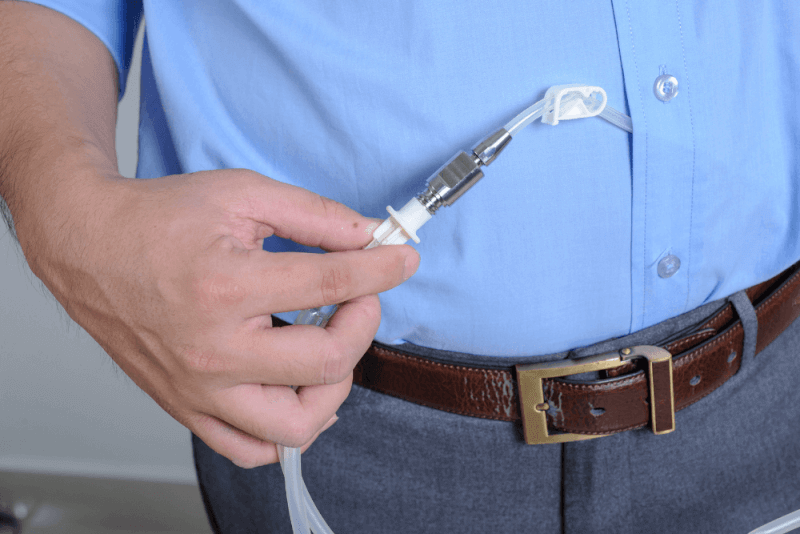What is iron deficiency anemia?
Iron deficiency anemia, which affects red blood cells, is the most common type of anemia worldwide. Red blood cells are responsible for carrying oxygen to the tissues. However, in order to fulfill this function, they must not make hemoglobin. This requires the element iron.
Iron is not an element produced in the body. Therefore, iron needs to be taken from outside. If iron is not sufficiently absorbed or metabolized from the outside, iron deficiency and iron deficiency anemia occur.
Diagnosis of iron deficiency anemia
Various blood tests are used to diagnose anemia due to iron deficiency. These tests determine the hemoglobin level as well as the amount of iron and ferritin in the patients' blood.
In these blood tests, the shapes of red blood cells are also among the determining criteria for diagnosis. In anemia due to iron deficiency, red blood cells are smaller than their normal size and their color is paler.
The accepted values for blood tests vary according to gender and age. Accordingly, normal ranges are determined as follows:
- The ideal range for adult women is between 35.5% and 44.9%.
- Accepted values for adult men are between 38.3% and 48.6%.
Hemoglobin values are also important in the diagnosis of anemia. Accordingly, the required hemoglobin value in adult women is between 11.6 and 15 g/dL. The hemoglobin value for adult males is between 13.2 and 16.6 g/dL.
To determine whether the anemia is due to iron deficiency, ferritin levels are checked in a blood test. Ferritin, a type of protein, helps to store iron. Therefore, low ferritin levels indicate low iron stores.
If the patient is diagnosed with iron deficiency anemia as a result of these tests, the next step is to determine the cause of this disease. For this, patients undergo additional tests.
The most common cause of iron deficiency anemia is problems in the digestive system. For this purpose, endoscopy and colonoscopy are among the most common tests performed on patients. Endoscopy is used to check for ulcers, stomach hernias or bleeding in the stomach, while colonoscopy is used to check for any problems in the intestines. In addition, various examinations are performed with pelvic ultrasound for those who complain of severe menstrual bleeding in iron deficiency anemia in female patients.
Some of the above-mentioned tests can be renewed depending on whether the clinical picture improves after iron supplementation.
Causes of iron deficiency anemia
Iron deficiency anemia, which occurs when there is not enough iron to be used in hemoglobin production, is caused by the inability to take enough iron into the body or by iron loss.
Blood loss
Blood contains red blood cells and therefore also iron. For this reason, blood loss is among the first causes of iron deficiency anemia. Women with heavy menstrual bleeding are particularly at risk for this reason. In addition, diseases such as colorectal cancer, colon polyps, ulcers and hiatal hernia, which cause the body to slowly lose blood and are among chronic diseases, cause iron deficiency because they cause blood loss in patients. These cases, called gastrointestinal bleeding, are often caused by the use of over-the-counter painkillers, especially aspirin.
An iron-deficient diet
Iron, which is necessary for the body, is taken into the body with food. For this reason, not including enough iron-containing foods in the diet leads to the development of anemia due to iron deficiency. Foods rich in iron include the following:
- Red meat
- Egg
- Green leafy vegetables
- Foods fortified with iron
Especially babies and children need more iron than adults for healthy growth. For this reason, more iron-rich foods should be included in their diet.
Failure to metabolize iron
Dietary iron is metabolized in the small intestine. If people have one of the diseases that prevent the absorption of nutrients such as celiac disease, iron absorption does not occur sufficiently. This leads to iron deficiency anemia. In addition, patients who have part of the small intestine removed by a surgical operation face the same risk.
Pregnancy
Iron stores of pregnant women are used as sources of hemoglobin for babies. For this reason, iron deficiency anemia is common during pregnancy. To prevent this, iron supplements should be used.
Symptoms of iron deficiency anemia
In the early stages of iron deficiency anemia, the symptoms are not sufficiently pronounced. However, anemia, which increases with the decrease in iron stores, causes the symptoms to worsen. Symptoms that can be seen in patients with iron deficiency anemia include the following:
- Extreme fatigue
- Cold hands and feet
- Weakness
- Headache
- Dizziness
- Pale skin
- Chest pain
- Rapid heartbeat
- Inflammation or pain in the tongue
- Excessive desire to eat unusual substances such as mud and ice
- Brittle nails
- Loss of appetite, especially in infants and children
- Difficulty concentrating
- Bruises
Among the more rare symptoms due to iron deficiency anemia are the following:
- Tinnitus
- Food tastes strange
- Itching
- Hair loss
- Difficulty swallowing
- Open sores in the corners of the mouth
- Spoon-shaped nails
- Restless leg syndrome
Stages of iron deficiency anemia
Under normal conditions, the flow of iron in stores is constant. In this way, the hemoglobin required for blood can be made continuously and without problems. However, if the body starts to use up iron faster than the stores are replenished, iron deficiency anemia occurs. This leads to a gradual decrease in iron release and anemia. Due to the slow progression of this process, iron deficiency anemia develops in 3 stages.
Phase one
In the first stage, there is not enough iron to make hemoglobin and red blood cells. The iron stores are empty. However, red blood cells are not yet affected.
Second phase
Reduced iron stores cause red blood cells to start to be affected at this stage. The development of erythropoiesis, also called latent iron deficiency, begins. At this stage, red blood production continues, but the cells do not have enough hemoglobin.
Third phase
At this stage, there is not enough iron in the body for the production of both red blood cells and hemoglobin. This leads to the development of iron deficiency anemia. In blood tests, the hemoglobin concentration drops and symptoms of anemia begin to appear.
Iron deficiency anemia treatment methods
When preparing the treatment plan for iron deficiency, the degree of iron deficiency and the factor causing iron deficiency are taken into consideration. For this reason, patients receive both treatment for the disease causing iron deficiency and treatment for iron deficiency anemia.
Drug treatment of iron deficiency anemia
The treatment for iron deficiency anemia is iron supplements. Iron supplements are used especially in iron deficiency anemia caused by nutritional deficiencies or blood loss. In addition, if there is a health problem that prevents iron absorption, then intravenous iron supplements are used.
When using iron supplements, the doctor's recommendations should be followed to increase their effectiveness. Iron supplements also have some side effects. These side effects include the following:
- Constipation
- Diarrhea
- Black feces
- Abdominal pain
- Feeling sick
- Pain sensation in the chest
To minimize these effects of iron medicines, it is recommended to take them with meals or immediately after meals. In addition, people who experience side effects are advised to continue using the medicines. Iron levels will be checked at regular intervals during treatment. Patients may continue to take medication for some time after the iron level rises to normal levels.
Iron deficiency anemia nutrition
Patients should also pay attention to their diet, especially if iron deficiency anemia is nutritionally induced. For this, they should include iron-rich foods in their diet. In addition, some foods reduce iron absorption and should be avoided.
Iron-rich foods
Among the foods that people with iron deficiency anemia, which are rich in iron, should consume plenty of, are the following:
- Dark green leafy vegetables such as watercress and kale
- Iron-enriched cereals, breakfast cereals and bread
- Red meat
- Dried apricots
- Prunes
- Raisins
- Beans
- Lentil
- Peas
- Chicken meat
- Seafood
In order to increase iron absorption, foods rich in vitamin C should be added to the diet. In this way, a greater proportion of the iron from food is absorbed into the body. Among the foods rich in vitamin C are the following:
- Broccoli
- Tomato
- Tangerine
- Grapefruit
- Kiwi
- Strawberry
- Forest fruits
- Melon
- Pepper
- Orange
Foods that reduce iron absorption
Among the foods that people with iron deficiency anemia should limit or completely eliminate in their diets are the following:
- Milk and dairy products
- Tea
- Coffee
- Foods with high amounts of phytic acid
- Whole grains
It is recommended that people with dietary iron deficiency seek help from specialists in regulating their diet.
Risk factors for iron deficiency anemia
Some people have an increased risk of iron deficiency anemia. These groups include the following:
Women
Regular menstruation is also one of the risk factors that increase the risk of bleeding-related iron deficiency anemia.
Babies and children
In addition to infants and children who do not get enough iron from either breast milk or formula foods, low birth weight or premature babies are also at risk of iron deficiency anemia. Children also need extra iron during growth spurts. Finally, children who do not eat a balanced diet are also at risk of iron deficiency anemia.
- Babies are born with iron stores that they only get from their mothers. These warehouses are emptied within 4 to 6 months. For this reason, mothers of breastfed babies should eat an iron-rich diet and use iron supplements if necessary. Formula-fed babies should have iron supplements in their formula
- Babies between 1 and 2 years of age should not consume cow's milk. The main reason for iron deficiency anemia in this age range is the consumption of milk and dairy products.
Young people
They are at risk for iron deficiency anemia because the growth spurts experienced during adolescence cause iron stores to be depleted more rapidly.
Individuals over 65 years of age
People over 65 are at risk of not getting enough iron as the amount of food they consume decreases.
Various medical conditions
People with bone marrow disorders or various autoimmune diseases are at increased risk of iron deficiency anemia.
Vegetarians
People who do not prefer to consume meat and animal foods are at risk of iron deficiency anemia if they do not pay attention to their diet and do not consume iron-rich foods.
Donating blood frequently
People who routinely donate blood are also at increased risk of iron deficiency anemia. For this reason, they should add iron-rich foods to their diet. If a low hemoglobin level is discovered during blood donation, the doctor should be informed about the seriousness of the situation.
Complications caused by iron deficiency anemia
Although mild iron deficiency anemia does not cause any complications, it can cause serious health problems if the anemia is left untreated and progresses.
Heart diseases
Severe iron deficiency anemia causes the heart to beat faster or irregularly. It changes the heart rhythm because the blood carries less oxygen and the body wants to compensate. This can eventually lead to an enlarged heart or heart failure.
Problems during pregnancy
There are some risks for women with severe anemia during pregnancy. These include preterm birth and low birth weight. To prevent this, it is recommended to use iron supplements during pregnancy.
Growth problems
Iron deficiency anemia in infants and children can cause inhibition of growth and development. It is also associated with increased susceptibility to infections in infants and children.










